
During Lent, church services take on a distinctive aura, marked by unique chants and texts that immerse us in a reflective, penitential state while also motivating us towards both physical and spiritual discipline. This transformation is largely attributed to the Lenten Triodion, the cornerstone liturgical book of this sacred season. Attentive participation in services guided by the Triodion reveals that Lenten endeavours should not lead to despondency; instead, they are meant to uplift and invigorate our spirits. The Triodion portrays Lent as a period of luminosity and mirth, where genuine repentance is intertwined with joy.
But what makes the Triodion a pivotal guide for repentance? What spiritual treasures does this book conceal? And why is engaging with it privately during Lent, particularly when weekday services are out of reach, so enriching? This article aims to shed light on these inquiries.
Delving Into the Lenten Triodion
The term “Triodion” originates from the Greek Τριῴδιον, meaning “three songs.” This liturgical text encompasses prayers (notably, unique three-song canons) and paremias (scriptural readings from Genesis, Exodus, Proverbs, and Job) for Great Lent, Holy Week, and the three weeks leading up to Lent. Its counterpart, the Paschal Triodion, or Joyful Pentecostarion, serves the liturgical needs of the Easter season.
Over time, the Triodion has evolved, with additions and modifications enriching its content. The book’s chants, some dating from the 5th to the 14th centuries, were penned by approximately 20 authors, including revered saints such as Andrew of Crete, John of Damascus, and Cosmas of Maiuma. These chants have their roots in the refrains early Christians used to accompany the singing of biblical psalms.
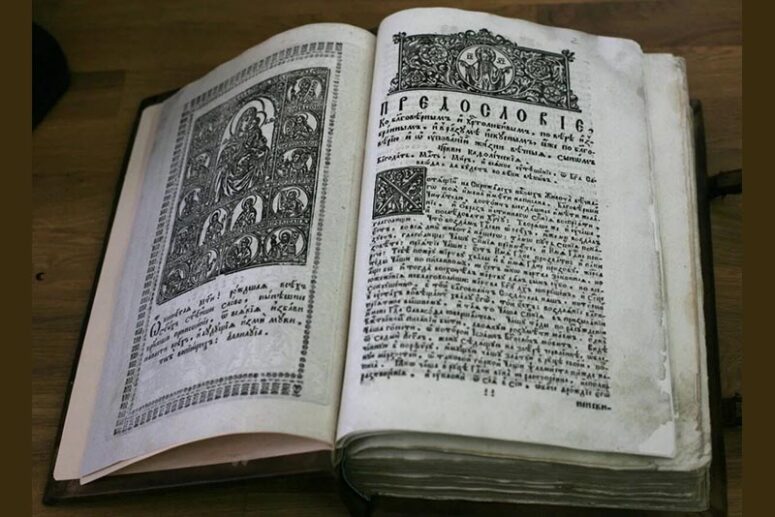
The Challenge of Unfamiliarity with the Triodion
The significance of the Triodion’s texts was a concern for Alexei Dmitrievsky, a prominent Russian liturgist of the early 20th century, who lamented the growing disconnect between Christians and the true essence of Lent. He attributed this disconnect to a lack of familiarity with the Triodion’s texts—a problem that persists today. Without regular attendance at weekday Lenten services or personal reading of the Triodion, many laypeople miss out on the profound beauty and depth of Lent’s primary liturgical resource—a problem that persists today. Without regular attendance at weekday Lenten services or personal reading of the Triodion, many laypeople miss out on the profound beauty and depth of Lent’s primary liturgical resource.
The Lenten Triodion intricately weaves penitential themes with the anticipation of Easter joy, echoing Christ’s teachings on fasting (Matthew 6:16-17). It presents fasting not as a mere ritual obligation but as a spiritual celebration, inviting Christians to experience Lent as a period of inner renewal and joyous preparation for the Resurrection.

Discovering the Lenten Triodion: Five Transformative Insights
Exploring the Lenten Triodion is beneficial for deepening one’s spiritual life, especially during Lent. Here are a couple of reasons to start engaging with its teachings, even if only minimally.
Combatting Spiritual Apathy. Addressing “spiritual avitaminosis” is crucial. Often, particularly outside Lent, there’s a tendency to become lax, not fully engaging with prayer or scripture, skimming without true understanding or heartfelt connection. This leads to a deprivation of the spiritual nourishment these sacred texts offer, drawing our focus away from our inevitable encounter with Christ and towards temporal distractions.
St. Paisios of the Holy Mountain suggests dedicating a little time each day to spiritual reading, prayer, and psalmody, likening them to daily vitamins for the soul’s well-being.

Incorporating the Lenten Triodion into daily readings, even just a few lines, connects us with the Church’s liturgical season, potentially igniting a positive transformation within. The Triodion teaches us to fast not just bodily but spiritually, loosening bonds of iniquity and engaging in acts of charity, thus receiving Christ’s great mercy.
“While fasting with the body, brethren, let us also fast in spirit. Let us loose every bond of iniquity; let us undo the knots of every contract made by violence; let us tear up all unjust agreements; let us give bread to the hungry and welcome to our house the poor who have no roof to cover them, that we may receive great mercy from Christ our God” (Sticheron at Vespers on Wednesday of the 1st week).

Confronting Our Inner Truth for Change The Lenten Triodion serves as a guidebook for repentance, pointing out our spiritual flaws and the correct perspective on life. Early in Cheesefare Week, it warns against a superficial approach to Lent focused merely on food abstinence:
“In vain do you rejoice in not eating, O soul! For you abstain from food, but are not purified from passions! If you have no desire for improvement, you will be despised as a lie in the eyes of God! You will be likened to evil demons, who never eat! If you persevere in sin, you will perform a useless fast: Therefore, remain in constant warfare, That you may stand before the crucified Saviour, Or rather that you may be crucified with him who died for your sake: Remember me, Lord, when you come in your kingdom!”
It challenges us to confront our perceived righteousness, urging a deeper introspection and genuine repentance:
“In life’s course, O Savior, there has been no sin, no deed, no wicked thing, that I did not commit. I have sinned as no one has ever before, in mind, word and intent, in purpose, deed and thought.” (from Ode 4 of the Great Canon of St Andrew of Crete).

Embracing Lent’s Joyful Heart. Understanding the true joyful essence of Lent involves reevaluating common perceptions that view this period as merely a time of “inconvenience” or a means to earn “merit” for divine favor. The Lenten Triodion, however, reveals a starkly different perspective, portraying Lent as a season filled with joy, light, purity, and the anticipation of eternal life with Christ.
The Lenten verses emphasize the celebratory and hopeful nature of this time. St. Theodore, for instance, describes fasting as “a time of joyful light purity, sheer love, and radiant prayer,” highlighting the transformative and uplifting aspects of Lent rather than viewing it as a burdensome obligation.
Kallistos Ware of Diokleia notes that early Christians saw Lent as a tithe to God—a joyous offering of time, which, although seemingly ours, is a daily gift from the Lord. This perspective mirrors the joy found in tithing by the Israelites, suggesting that fasting, too, can be embraced with joy as we give back to God our “tithe” of time. “All mortal life is but one day, so it is said, to those who labour with love. There are forty days in the Fast: let us keep them all with joy” (from the canon of Matins on Monday of the First Week).

Fr. Alexander Schmemann further illuminates this joy, associating it with a return to the original state of grace that humanity experienced before the fall. He posits that if Adam had maintained his fast, the sorrow of exile from Eden could have been avoided. This return to “normal” life, to the prelapsarian state, is where the true gladness of fasting lies.
“With great gladness, let us receive the proclamation of the Fast: for if Adam, our forefather had fasted, we would not have suffered banishment from Eden” (Sticheron at Matins on Friday of the 1st week).
Exploring Old Testament Wisdom through Lenten Eyes. The Lenten Triodion also delves deep into the Old Testament, offering rich interpretations of its narratives. It draws parallels between the stories and the spiritual journey of Lent, showing that the fathers of the Church found profound significance in all biblical texts.
For example, St. Andrew of Crete’s Canon interprets Jacob’s two wives as symbols of action and contemplation—both essential for salvation: “By the two wives, understand action and knowledge in contemplation. Leah is action, for she had many children; and Rachel is knowledge, for she endured great toil. For without toil, O my soul, neither action nor contemplation will succeed” (cf. Gen. 30: 11; 31).
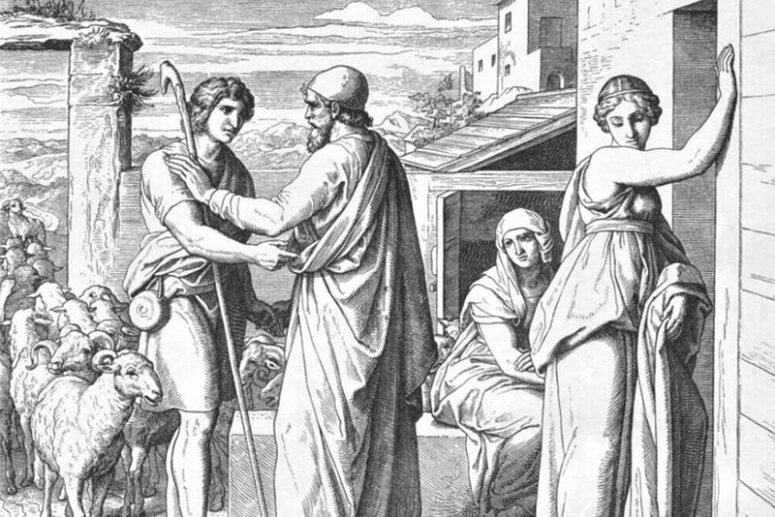
Moreover, the Triodion employs Old Testament imagery to convey spiritual truths, such as Moses’ slaying of the Egyptian as a metaphor for overcoming sin. St. Andrew uses this story to encourage the soul to “kill the Egyptian” within, symbolizing the triumph over sinful impulses to hear God’s voice more clearly: “O miserable soul, thou hast not struck and killed the Egyptian mind, as did Moses the great. Tell me, then, how wilt thou go to dwell through repentance in the wilderness empty of passions?” By immersing ourselves into these themes, we can begin to align ourselves more closely with the Church’s season of repentance, reflection, and ultimately, spiritual renewal.
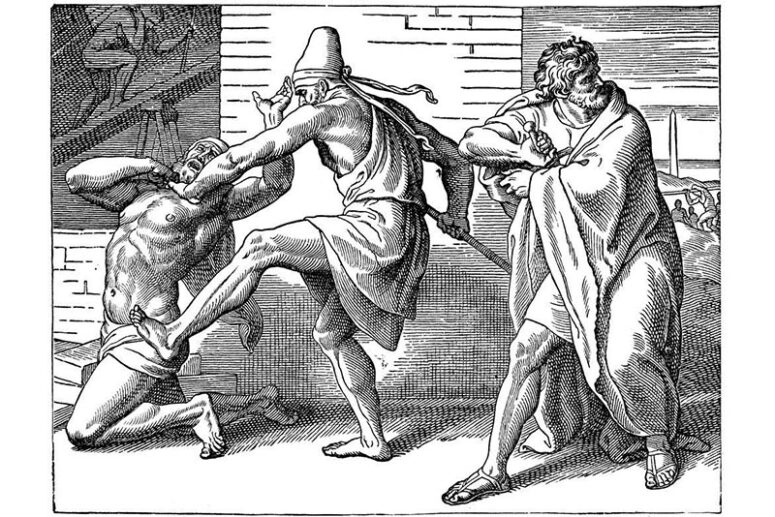
Discovering the Weekly Themes of Lent: A Path to Easter’s Joy. Delving deeper into the Lenten journey enriches our understanding of each week’s unique themes and spiritual lessons, emphasizing the purpose and ultimate goal of this sacred season. Even if attending weekday services isn’t possible for everyone, engaging with the Triodion’s texts can offer valuable insights.
For instance, during the first week of Lent, the Church invites believers to embrace “all-honourable abstinence,” guiding us toward a fasting practice that is pleasing to God and unveiling the essence of true fasting:
“Hating the surfeit of the passions, O my humble soul, feast rather upon the rich food of God’s blessings. Take thy delight in the pleasures of the Fast, turn away from the bitterness of lust, and thou shalt live for ever” (from the 8th canticle of the canon on Monday of the 1st week).
In the second week, the emphasis continues on fasting, prayer, repentance, charity, and other virtuous deeds, with vivid scriptural examples encouraging us to persevere:
“Prayer and fasting are a marvellous weapon. Through them Moses became writer of the law and Elijah a fiery enemy of false sacrifice. Let us persevere in them, ye faithful, and cry unto the Saviour: Against Thee Only have we sinned; have mercy on us” (verse after the 9th canticle of the Canon on Monday of the 2nd week).
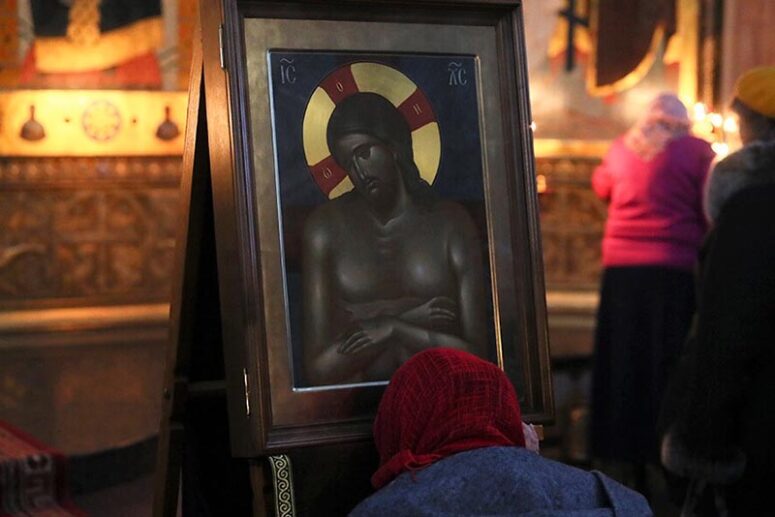
“Elisha, so it is written, after fasting brought the dead child back to life: let us also fast, killing all our carnal thoughts, that in the Age to come we may receive eternal life” (from the 9th canticle of the canon on Wednesday of the 2nd week).
The third week introduces new figures of saintly asceticism, calling for the taming of passions through fasting and embodying the courage of biblical heroes: “Imitating the marvellous Gideon, who defeated the Midianites…” (from various canticles of the Canon on Monday of the 3rd week). It also prepares us for the week of the Cross with reflective hymns:
“With our flesh cleansed by abstinence and our souls filled with light by prayer, count us worthy, O Lord, to look upon Thy precious and venerable Cross and to revere it with fear, singing hymns…” (Sessional hymn at Matins on Friday of the 3rd week by Theodore).
The fourth week venerates the Holy Cross, celebrating its life-giving power with profound hymnography:
“As now we venerate the Cross, let us all cry: Hail, Wood of life; hail, holy sceptre of Christ; hail, heavenly glory of mortal men; hail, pride of kings; hail, strength of the faith; hail, unconquerable weapon; hail, vanquisher of enemies; hail, radiant light that saves the world; hail, great glory of martyrs; hail, power of the righteous; hail, splendour of the angels; hail, precious Cross!” (To Lord I have cried on Monday evening of the fourth week).

By the fifth week, there’s a sense of progression through the Fast, with encouragement to continue our efforts as the Resurrection draws near: “With God’s help we have rounded the turning post of the Fast. Let us run the remainder of the course with all our strength, and win a victor’s crown” (canon of Matins on Monday of the 5th week). This week also honours St. Mary of Egypt and includes the Saturday of the Akathist, celebrating the Theotokos.
In the sixth week, the Lenten Triodion brings us to the contemplation of the Gospel parable of the rich man and Lazarus, underscoring the themes of compassion and humility:
“Deliver me from the rich man’s lack of love and from his selfishness, O Christ my God, who through Thy Cross hast cleansed us from our sins. Make me follow Lazarus the poor man in his thankful patience, and in Thy great mercy deprive me not of a place with Abraham the Patriarch” (canticle on Friday of the 6th Week).
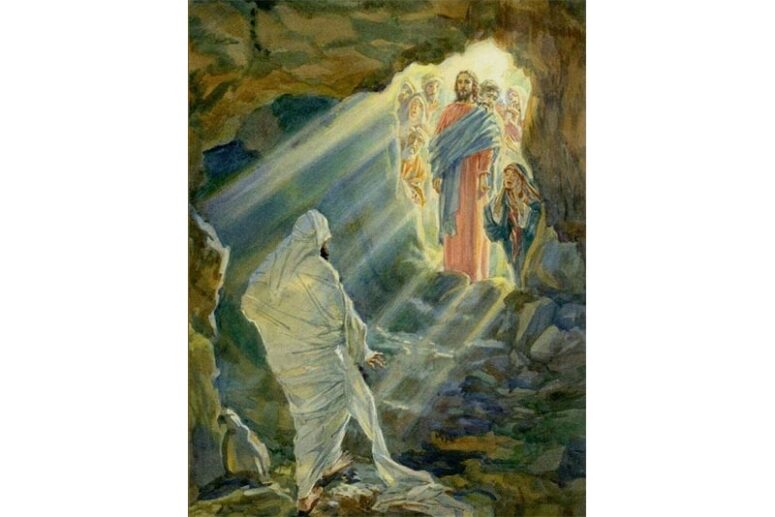
This week also paves the way to Lazarus Saturday and Palm Sunday, offering a prelude to Christ’s triumphant entry into Jerusalem and His upcoming Passion:
“As Thou wast approaching Bethphage, hell our adversary heard the sound of Thy feet, and he touched the feet of Lazarus, saying, ‘If the Life calls thee, delay not, but go out: for I know that my destruction will come swiftly” (from the 8th canticle of the canon at Matins on Friday of the 6th Week).
Holy Week itself immerses us in the poignant narrative of Christ’s final days, His trials, crucifixion, and burial, inviting deep reflection and empathy:
“The first-fruits of the Lord’s Passion fill this present day with light. Come then, all who love to keep the feast, and let us welcome it with songs. For the Creator draws near to undergo the Cross; He is questioned, beaten, and brought to Pilate for judgement; a servant strikes Him on the face, and all this He endures that He may save mankind. Therefore let us cry aloud to Him: O Christ our God who loves mankind, grant remission of sins to those who venerate in faith Thy Holy Passion.” (Sessional hymn at the beginning of Matins of Holy and Great Monday)

Concluding with Holy Saturday, the Triodion’s journey through Lent is not merely an observance of Christ’s suffering but a preparation for the Resurrection, permeating with themes of the Holy Cross, Resurrection, and the joy of Easter: “Rejoice, thrice-blessed and divine wood of the Cross, light to those in darkness. As you shine to the four corners of the earth, you prepare us for the dawn of Christ’s resurrection. Grant to all the faithful that they may come to the feast of Pascha” (from the Canon at Sunday Matins of the 3rd week).
Throughout Lent, the Church underscores that our spiritual efforts are directed towards the ultimate joy of Easter in the Kingdom of Heaven, encouraging us to keep the anticipation of this Paschal joy at the forefront of our Lenten journey. This reminder enriches our understanding and appreciation of the Lenten Triodion, a treasure trove of spiritual wisdom that offers a path to renewal and deeper engagement with the essence of Orthodoxy and the “Paschal” way of life.
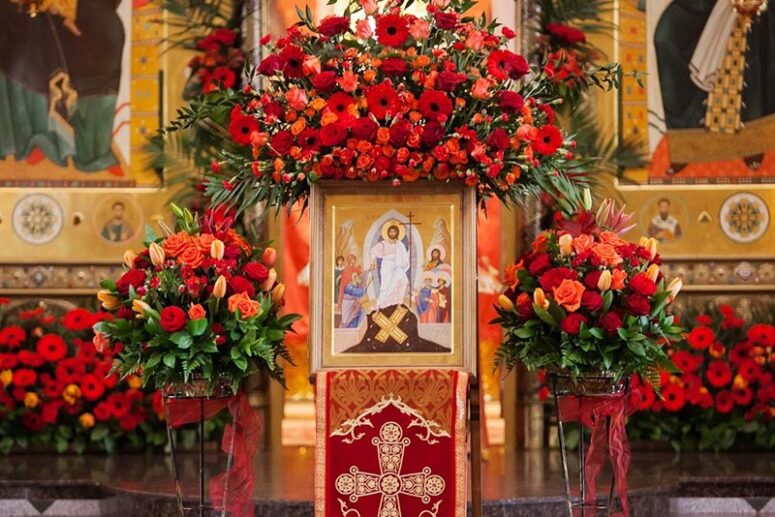
As we’ve only begun to explore the vastness of the Lenten Triodion, we hope this encourages further exploration of its profound beauty and spiritual depth, echoing Fr Alexander Schmemann’s sentiment that rediscovering the Triodion can revive the spirit of Lent and the very heart of Orthodoxy.

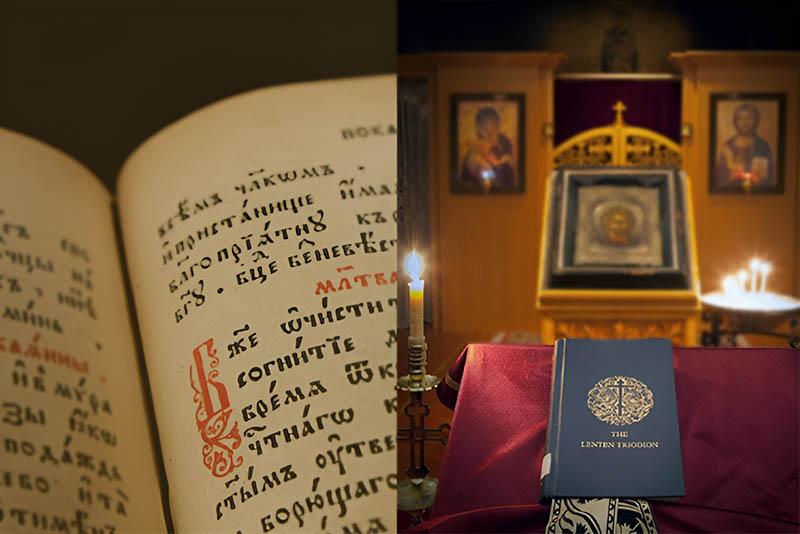



Beautifully written and very wise!
Thank you, very informative. I will read this again.